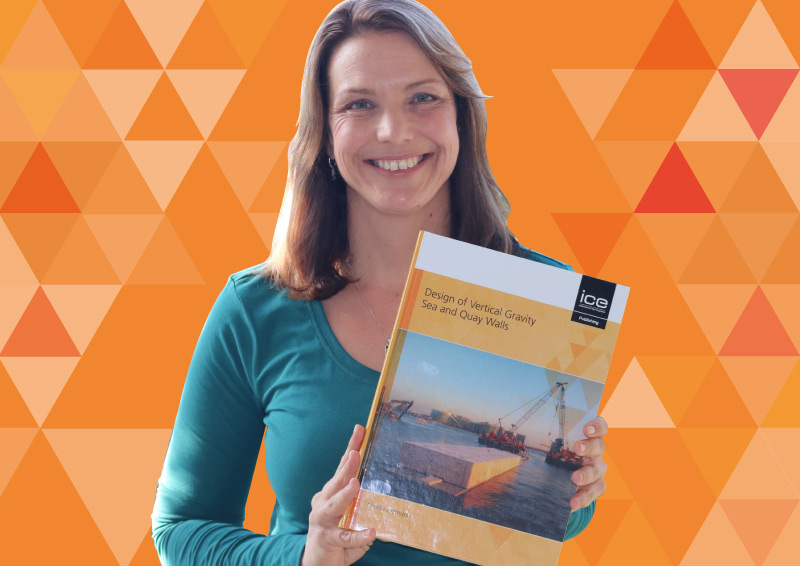What is it really like to be an author? Marisa Ackhurst, author of Design of Vertical Gravity Sea and Quay Walls, wrote the book whilst taking care of a young family and working full time.

- Updated: 15 Sep 2020
- Author: Associate and marine structural engineer at Zutari
What inspired you to work in civil engineering?
I always loved both art and maths as subjects in school. After considering various career options I realised that I would be able to combine both in the field of civil engineering. As engineers we are forever finding solutions to problems using maths and creative thinking – it is the fact that the numbers are combined with being creative that drew me to it in the first place. Another benefit is that we are helping others by providing an essential service to our communities, our country and the world. I enjoy ‘giving back’.
What does writing a book entail?
A love for roller coasters!
This was definitely a roller coaster ride for me, but also a ‘well thought out and planned’ ride.
I work full time and have a family with very young kids so planning (and sticking to the plan) was essential. I only had a few hours available per week, after the kids’ bedtime, to work on the book so I had to stay dedicated and work efficiently.
What is the best part of writing a book?
Finishing each chapter and then looking at the progress you have made. Life goes on as normal while writing a book, you still have work deadlines that require after hours involvement, young kids still get sick and the general daily chores continue. Keeping this in mind, it was always very satisfying to see how much I could actually achieve within the time available.
And the worst…? What was the biggest challenge you faced?
I really struggled to stick within the allowable number of figures, tables and equations I could use. I am a ‘a picture tells a thousand words’ type of person.
I have also realised why so many other design guides do not include ‘worked examples’! It took a lot of checking, double checking and triple checking, by myself and others, to make sure everything is accurate before sending it off to ICE Publishing.
What will the reader learn from your book?
How to apply the design codes in ‘real life’ and where to find more information if needed. Additionally, the section on wave actions on sea walls may be very useful.
How do you take your tea?
Any tea, sometimes with milk, sometimes black, mostly without sugar – definitely no strict routine here! I do also enjoy Rooibos tea with honey.
If you could invite any engineer (alive or dead) to dinner, who would it be?
Arthur Moss-Morris was the engineer who was responsible for a number of the old gravity quay walls in South African ports – I would love to chat with him about the way things were done back then.
A dinner party needs more than one guest so I will have to add (Isambard) Brunel to the guest list. His range of experience is impressive, anything from bridges to steamships.
Want to find out more about Design of Vertical Gravity Sea and Quay Walls, a guide covering everything you need to know about the design of vertical gravity concrete sea and quay wall structures? Available in print and as an eBook, it will walk you through you the complete process from structure type selection through to detail design.
Our book author blog includes tips for writing your own book, including how to create a plan.
